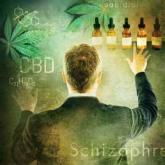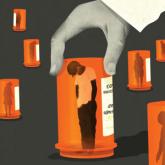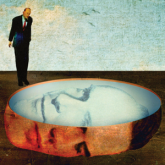Article

Conspiracy theory or delusion? 3 questions to tell them apart
- Author:
- Joseph M. Pierre, MD
Many psychiatrists conceptualize mental illnesses, including psychotic disorders, across a continuum where their borders can be ambiguous.
Opinion

Believing in conspiracy theories is not delusional
- Author:
- Ronald W. Pies, MD
- Joseph M. Pierre, MD
Instead of trying to “talk the patient out of” his or her belief, focus on sustaining and strengthening the physician-patient alliance.
Article

Time to retire haloperidol?
- Author:
- Joseph M. Pierre, MD
For emergency agitation, evidence suggests newer alternatives may be a better choice.
Article

Cannabidiol (CBD) for schizophrenia: Promise or pipe dream?
- Author:
- Joseph M. Pierre, MD
The evidence is mixed, and the benefits are uncertain.
Article

Abuse of psychiatric medications: Not just stimulants and benzodiazepines
- Author:
- Joseph M. Pierre, MD
Anticholinergics, antidepressants, antipsychotics, and gabapentinoids may also be subject to misuse or abuse.
Article

Real-world challenges in managing ‘dual diagnosis’ patients
- Author:
- Joseph M. Pierre, MD
Diligent assessment and judicious prescribing can help optimize outcomes.
Article

Risks of increasingly potent Cannabis: The joint effects of potency and frequency
- Author:
- Joseph M. Pierre, MD
As THC levels rise, the risk of psychosis, cognitive deficits, and structural brain changes increases In the United States, the average potency of...
Article
Cannabis, synthetic cannabinoids, and psychosis risk: What the evidence says
- Author:
- Joseph M. Pierre, MD
Research suggests marijuana may be a ‘component cause’ of psychosis
News
High-dose antipsychotics: Desperation or data-driven?
- Author:
- Joseph M. Pierre, MD
- Donna A. Wirshing, MD
- William C. Wirshing, MD
For patients on the brink of the neuroleptic threshold, risks of high-dose antipsychotics may outweigh any benefit.
